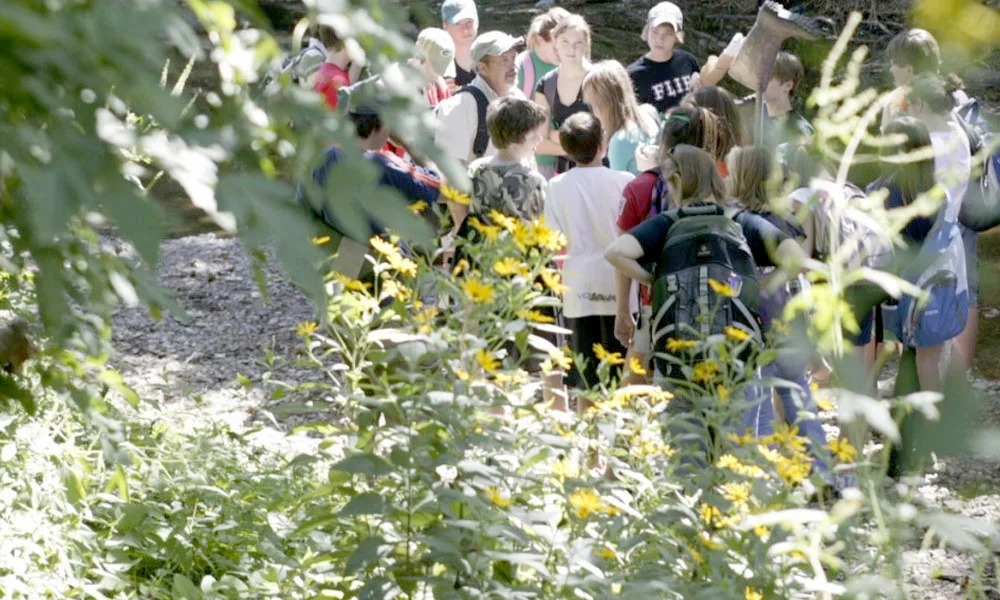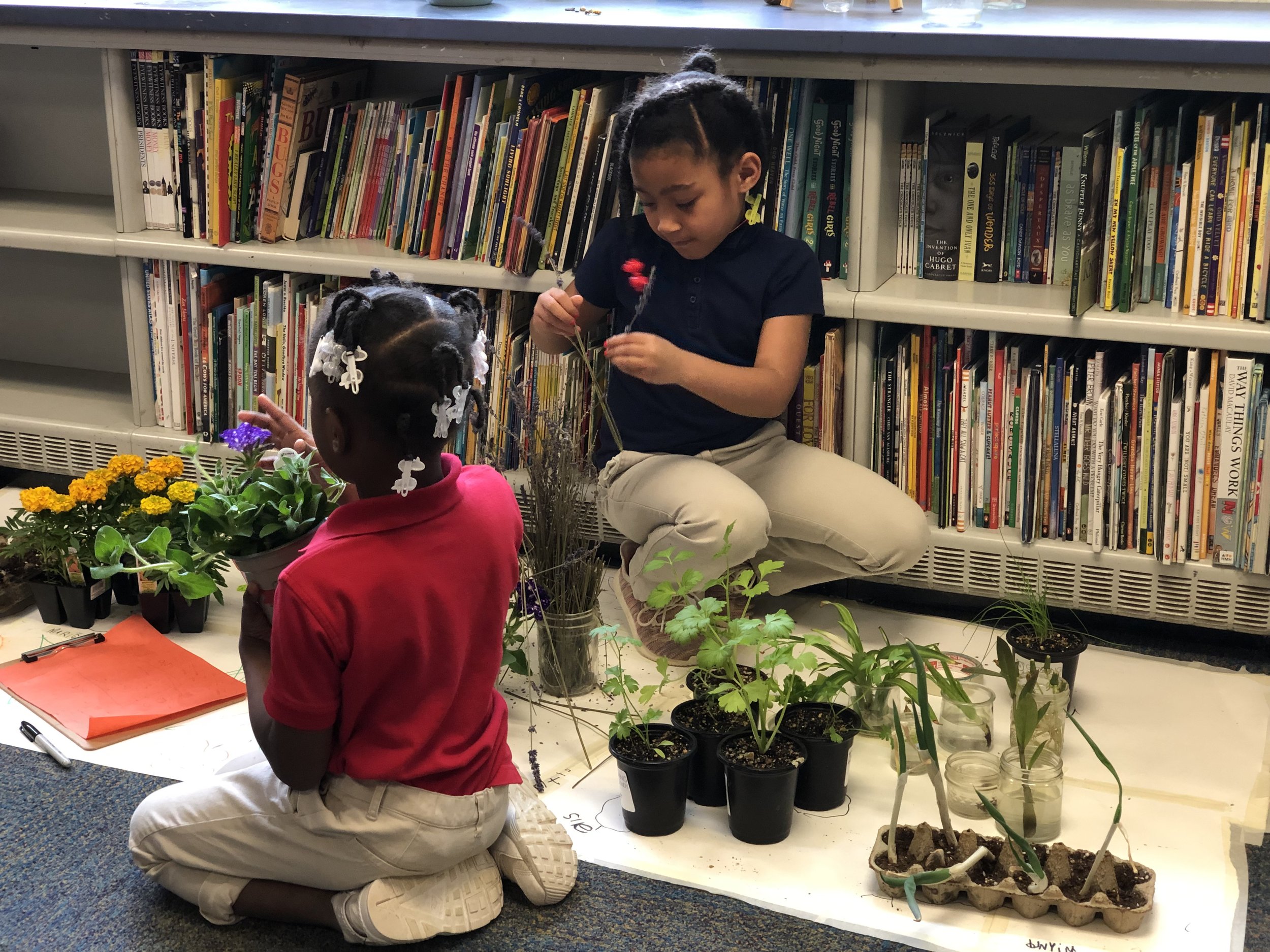Delilah, age four, writing names of her favorite birds.
I have been captivated of late by early and emergent writing because of the schools and teachers that we work with and because of our grandchildren.
Our four-year-old granddaughter, Delilah, has been writing letters and words with such strong motivation and determination over the course of the last month…it’s what she wants to do more than almost anything else.
I spend a lot of time with Delilah and her brother Asher, pulling out all of the art materials that we have in Boston or Vermont, or traveling, wherever we happen to be together. Both of them have loved painting and drawing since they were toddlers and that has been a joy to witness.
Last weekend, Delilah came to visit for a few hours. First we played Bird Bingo, (her version), and then she suggested that we each choose three of our favorite birds. I asked if she would like to draw the birds and she did.
Sitting down with her favorite bird game pieces in front of her, along with colored pencils, colorful and black sharpies, and oil crayons, Delilah said, “First I am going to write my name. Then, I am going to write the names of the birds so people know what birds they are. You tell me the letters and I will write them.” She had chosen the Splendid Fairywren native to Western Australia, the blue tit native to Europe and Great Britain, and the Emperor penguin native to Antartica. You can imagine, writing all these names took some time!
I was surprised that Delilah wanted to take on this big project, but she did not hesitate. She was determined, focused, and so excited that she was writing so many letters that meant something! The names of her favorite birds.
I gave her the time, the space, the materials, and my attention. She chose what to do. It was thrilling to watch her write.
Message Center. St. Michael School, St. Louis, Missouri
The University of Vermont Campus Children’s School composed a piece of documentation that explains their approach to supporting children’s emergent writing as well as a framework that they reference that is also referenced by NAEYC (Puranik & Lonigan, 2014).
The framework of is composed of three domains: conceptual knowledge; procedural knowledge; and generative knowledge.
Conceptual knowledge refers to the function of writing. Young children understand that writing is purposeful and that print carries meaning.
Procedural knowledge refers to the mechanics of writing letters and words…learning letter forms and sounds, as well as learning and using motor skills and tools.
Generative knowledge describes the understanding and ability of children to write phrases and passages that convey meaning. Children can express themselves in many ways including composing stories; dictating for adults to record; authoring as a group; note writing, creating lists, and sending messages.
Four and five-year-olds working on messages and books, Principia School, St. Louis, Missouri
In addition to the framework, Puranik & Lonigan explain each stage, name it, and illustrate it with examples by children. (At the Campus Children’s School, they used work by their students to illustrate the stages.) The stages are as follows: Drawing and Scribbling; Wavy Scribbles and Mock Handwriting; Letter like forms or Mock Letters; Letter Strings; Transitional Writing; Invented or Phonetic Spelling; Beginning Word and Phrase Writing; and Conventional Spelling and Sentence Writing.
Yaebinkim, T. (2017). Promoting Preschoolers’ Emergent Writing. Young Children.
Print rich environments as well as opportunities to write names, lists, observations and messages in areas of a classroom or at home all promote children’s confidence and skill in writing.
One of my favorite areas of the early childhood classrooms in Reggio Emilia, Italy are the Message Centers. The year that we lived in Reggio and I was a fellow at both Diana School and La Villetta School, I had the chance to observe how these areas worked and to witness stories emerge. Children and teachers had mailboxes fashioned in different ways at different schools. There was a table or desk with several chairs and many organized materials…colored pencils, fine line pens of different colors, a variety of types and sizes of papers, collage materials, envelopes, bird and other stamps. I have two favorite stories from that year among many others that center around messages.
The first is about a message composed by Guilia who was a student in the Grandi class which is equivalent to our kindergarten in North America. Guilia concentrated for a good part of the morning on her message with words and illustrations made with colored pens on two small pieces of white paper. The message read:
Guiia Cuoro
Guila Guilia Mondo
Guilia Stella
Guilia Nuvola
Gulia Luna
You may be able to guess the translation:
Julia heart
Julia Julia world
Julia star
Julia cloud
Juila moon
Gulia put this message in her own mailbox. I understood that it was a poem that she had made for herself. I was so struck by this poem where she identifies with and speaks from her heart to the whole cosmos.
Guilia was five-years-old. No one taught her to or asked her to write poetry. Actually, no one taught her to write. (The Italian language is so phonetic and consistent that it is much easier to learn to write than English!) In fact, even though they do not explicitly teach reading or writing in the preschools of Reggio Emilia, a very large percentage of the children leave the schools reading and writing.
Another story is about three children also in the class of the Grandi, Luca, Agnese, and Carla.
Luca loved Agnese and wrote her this message…except he couldn’t write very well so he asked Carla to write for him. (This is encouraged by teachers…asking peers who are skilled in some area to help.)
Here is the translation:
Dear Agnese,
I am too in love with you but sometimes you make me mad because you play with others and I don’t like that because then, who am I supposed to play with? I can never tear myself away from you! Tomorrow I will marry you and run after you with my black cape.
With many kisses,
Dicated by Luca
Written by Carla
Agnese responded in this way with a written message::
Dear Luca,
I can’t marry you the day you said because I am too little! Right? And also, I am never going to get married because it doesn’t suit me. I will play with you but I don’t like all your kisses. I would like a lot less. One day I will invite you to my house.
Respond with another message and I will answer you again.
Agnese
All these messages are written with what Carlina Rinaldi might call artful letters. They are on colored tissue paper written with many colors of pens, with drawings and some collage. They are beautiful.
These are examples of what can occur in schools where communication, relationships, and aesthetics and poetics are valued and form part of the the fabric of the culture of the school. Maybe these stories are uniquely Italian, but I like to think that they are uniquely human. I believe that young children will choose to write difficult words such as Splendid Fairywren if the context supports them. I believe that children who are five will write poetry and love letters on beautiful papers if the culture supports them wherever they are.
What might our framework be for this? What might we learn from the poems, songs, and love letters of children?
Birthday message from children at La Villetta School.











